
Mario Sironi
“We are witnessing transitions from social-welfare states to social-control states around the world. We are facing a global crisis that is unprecedented, given its magnitude, its global reach, the extent of ecological degradation and social deterioration, and the sheer scale of the means of violence. We truly face a crisis of humanity; we have entered a period of great upheavals, of momentous changes and uncertainties. “
William Robinson
The painting above is by Italian fascist painter Mario Sironi. It is a magnificent and haunting work. Sironi was a strange isolated figure even when rabidly supporting Mussolini. He was an architect of sorts, but his plain brutal buildings were not met with favor by either the fascists themselves, or architechtural critics. When I look at this painting I see something of my own fear of the world. It is an urban landscape in which exactly the unecessary things have been removed. All that is left are those emotions we hide from. At least I hide from them. The street could be Poland as easily as Sardinia, or early 20th century Kansas City. Though perhaps not KC, not north America, for there are subtle suggestions of Europe in this place. This dream space. One thinks of DeChirico of course, but Sironi is far more disturbing. These are not the kitsch dreams of the surrealists. These are the depictions of a core emotional terror. One of the reasons for Sironi’s neglect, besides his odious politics, is that it is hard to look at his work for too long. It is accusatory. It is Kafka in that way. The accusations are unclear, uncertain, and somehow we know our questions will remain unanswered.
Sironi was a fascist. And it may be that what we recoil from in his powerful canvases is the death instinct staring back at us. For this is the real fascist art. Rachel Kusher, Safron Foer, et al are just the simulacra of writers, and they write pretend books that really are unreadable in the end, but no matter, because you are buying the package. It comes with an appreciation kit, a set of approved responses, a glossary of terms to be used, and even a *do-it-yourself-just-add-water-political moderation-packet*. There is no experience attached to Abramovic or Kushner, and very little, in the end, attached to corporate products of any sort. Nothing looks back at you. I meantion this because it has so much to do with class as its expressed culturally. Kushner’s grandfather, I believe, was head of United Fruit in Cuba. Her excessively well recieved novel Telex from Cuba is really a sort of evocation of western bourgeois nostalgia about pre-Revolutionary Cuba. Now, I bring this all up because it so perfectly captures the reactionary white liberal culture. In an interview about her novel, Kushner says this:
“My problem was not a protracted timeframe, but a subtle network of dynamics: the American executives at United Fruit and the Nicaro Nickel Company were dealing with Batista and in denial of the revolution. But the revolution was obviously real, and so I needed to send some people up into the mountains to behold what was happening there. A disaffected narrator like La Mazière–like Rachel K, based on a real life figure of that same name–serves this role. Also, he cuts through a bit of the romance associated with revolutionary change.”
and then when asked about I Am Cuba she says…
“Funny you should ask, because one of the images on my website, www.telexfromcuba.com, is a still I made from I Am Cuba, of women in a poolside beauty contest, to depict what La Mazière means when he speaks of a place “where dreams are marbled with nothingness”–i.e., a place simultaneously at a height and in decline, upon which he’s projecting his own knowledge of decline, having lived through the German occupation of Paris and their subsequent departure eastward, as they were crushed by the Allies and the party was over. I thought a lot about whether or not to use this image, because the film was not made in the fifties, but in 1964, and moreover with a real political agenda. That said, it is indeed an amazing film, and the tracking shot into the swimming pool at the beginning is right up there with the tracking shot at the beginning of Touch of Evil as a stunning technical feat (and was even replicated by Paul Thomas Anderson in the opening of Boogie Nights). But I Am Cuba is more than just beautiful and strange. It is, as I said, extremely dogmatic, it’s a piece of propaganda, really, and yet it is one of only a handful of films that you show you what prerevolutionary Havana might have looked like. There are no films made in the fifties that actually portray life in Havana at that time, at least that I am aware of. It’s the closest thing, despite its dogma. And even its dogma can take on a kind of surreal charm: the “evil” Americans are all played by Russians, who have these heavy and angular Slavic jaws. Also, they speak with Russian accents.”

Johan Mongles Culverhouse, 1880 appx.
Now, these are very revealing comments. Kusher is the perfect daughter of privilege, expensively educated, and comfortable in the brie and chablis circuit of gallery openings in Manhatten (she wrote for BOMB I believe, on art) and she is more sophisticated than the rather primitive Sophie Coppola, but her treatment of revolution is much the same. It was inconvenient. She chooses to cut through the romance of revolution. What does that mean? Is she cutting through the “romance” of Batista’s muderous regime and land theft? Of Machado’s? The condesencion toward Fidel throughout is staggering. This is a rich girl who got to play in a gated United Fruit company town as a child, attended to by Haitian houseboys (whom she remembers fondly). This is precisely white supremicism. In the exact same way that Jenji Kohan offers her liberal bromides and confessions with each of her shows, so writers such as Kushner can, from the olympian moral heights of Publishers Weekly, share her affection for the indentured servants of her families estate in pre-Revolutionary Cuba.
Now, this leads to another topic regarding colonial thinking, but before I get to that below, I wanted to touch on a couple other things.
Jannis Kouenellis, an Italian/Greek sculptor and painter is another fascinating figure, but one who on enough occasions finds something that is absolutely bone chilling that perhaps one shouldn’t think of him as minor. I’ve not ever read a decent analysis or review of Kouenellis. He is lumped in with the Arte Povera people, and thats not incorrect, but it is the secondary focus, the backgrounds, and the architecture that somehow finds it way close to the center. Something deeply troubling haunts the edges and peripheries of Kounellis work. It is always like a memory one cannot quite grasp. Like Sironi, it is what has been removed, but its not a passive removal. It, whatever it is, whoever it is, has been forcibly removed.
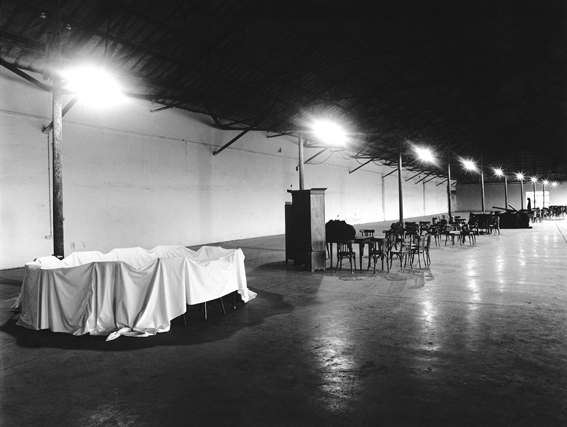
Jannis Kounellis, installation at Jaffe.
Kounellis work is not meant to flatter. The corporate media flatters and panders to the taste of its audience. It also flatters itself, and it also increasingly creates a model for how public discourse takes place. It is not just what is said, but the frame in which it is said. The frame is complex, however, and its not easy to see the edges of it. The U.S. war machine is ready to attack Syria this week, and no doubt will.
“One of the mechanisms is what I term militarized accumulation. This involves making wars and undertaking interventions that unleash cycles of destruction and reconstruction, and generate enormous profits for an ever-expanding “military-prison-industrial-security-energy-financial complex.” We are now living in a global war economy that goes well beyond such “hot wars” as in Iraq, Afghanistan or Syria. Another mechanism is the raiding and sacking of public budgets. The Transnational Capitalist Class uses its financial power to take control of state finances and impose further austerity on working majorities. The Transnational Capitalist Class employs its structural power (its control over the global economy) to accelerate the dismantling of what remains of the social wage and welfare states.”
William Robinson
Sironi could and can never be popular in the sense that I dont think one wants to live with his work for extended periods. I dont know for a fact, but I’d guess he is not widely collected. The public we find in the new 21st century is one more succeptible to flattery than any in history.
It is an audience that likes to witness others flatter the status quo as well. It is almost a spectator sport, the observance of other craven flatterers of power. In one sense, the artist of importance and significance is the one who never flatters, but also the one whose work creates class tensions. Rachel Kushner, and her family background, has value for her in the teaching of court flattery.
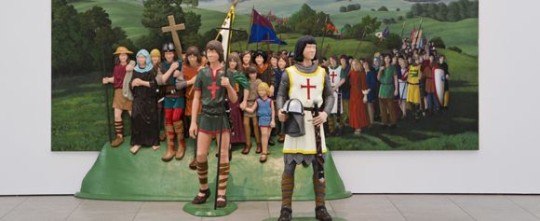
Martin Honert
“When war is in the air, even the reporters like to talk like Generals, “striking their command and control centers,” and discussing “target potfolios,” their eyes alive with a slightly loony simulation of mission-resolve in their layer upon layer of simulacra, actors playing reporters playing Generals; and we can all tune in, participate from within our smart, technological living spaces, following the action. People are going to be killed and we can be in on it, we can approve of it, we can play along.”
The Chasin Jesus blog.
So, back to frames for all this. For this reductive and enclosed mimesis. The propaganda machine is run by white men. It is the white male agenda for propping up the supports for masculine domination. Rich white men. These frames are assisted by the western addiction to junk science. While there is plenty of great science around, there is rarely a discussion about what constitutes junk science, or even the ideological meaning of serious science.
Paul Haeder writes a good deal about it here:
http://dissidentvoice.org/2013/08/soy-mafia-and-gmo-assassins-aided-and-abetted-by-scientific-american/
This is corporate, and often Pentagon, funded research. It is either for profit, or for control and war, which is of course also for profit.. Technology develops in line with what can be sold to the public, while the rest is done to further defense contractor profits. The defense industry arms both sides, a fact often forgotten in all this. What weapons do the two sides in Syria carry? Where did they buy them??
The militarized consciousness has fostered the worlds largest industry, even ahead of pornography. Death merchants.
http://www.dsei.co.uk/
This year’s arm’s fair, to which almost every country in the world sends representatives, will include the following seminars:
“Air Manoeuvre Tactical Leadership Training – solution for a capability gap”- Colonel Christoph Hegele, German Air Force.
–
Head of Strategy Department and Deputy Director General, Swedish Defence and Security Export Agency will provide an exclusive presentation “From National Project to International Cooperation – The Gripen System” highlighting the increasing importance for international cooperation to develop new innovations and efficiencies.
–
“Enhanced High Capacity Data Radio (EnHCDR) – Secure Mobile Combat Internet”, Mr Keith Morgan, Deputy Chief Engineer, Exelis Defence Limited.
“Building the Earth’s nervous system – how fibre-acoustic sensing is changing our world”, Mr Mark Stead, Director, OptaSense Ltd.
“Heckler & Koch Advantage – Delivering the Heckler and Koch Standard”, Mr Tim Collins, Heckler and Koch.
“Social Media: A Security Challenge & Opportunity” , Mr Giles Brown Business Development Director (EMEA), Social 360
–
oh and one I know I dont want to miss…
from the “unmanned theatre” as they are want to call it (everything is a theatre you see…Land Theatre, Navel Theatre, Air Theatre, etc)…
-“Civilian Applications of UAS/RPAS”, including:
Factors affecting the wide spread use of UAS by Queensland Police, the end user perspective.
“An evolution in Unmanned Aerial Systems” by Northrop Grumman.
An exclusive panel session studying the Oil & Gas perspective –the civilian applications.
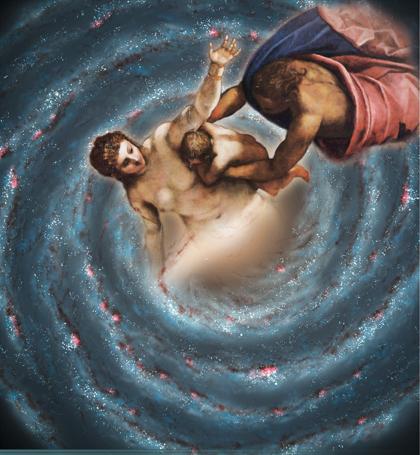
There are literally hundreds of seminars. Those footing the bill for these seminars include such sterling organizations as:
ATK. Now, ATK is an aerospace, defense, and commercial products company with operations in 21 states, Puerto Rico, and internationally. ATK delivers affordable innovation in developing and manufacturing highly engineered products and solutions to our customers around the world.
ATK Aerospace Group— (as they say of themselves): the world’s top producer of solid rocket propulsion systems and a leading supplier of military and commercial aircraft structures. It also specializes in small and micro-satellites, satellite components and subsystems, and lightweight space deployables and solar arrays.
ATK Defense Group is an industry leader in ammunition, precision and strike weapons, missile-warning solutions, and tactical rocket motors. ATK Defense Group develops advanced capabilities for fuzing and warheads, weaponized special-mission aircraft, and propulsion/controls. The group also brings expertise in defense facility management and modernization.
ATK Sporting Group is the established market leader in sporting and law enforcement ammunition, and tactical and shooting accessories. The group serves sport-shooting enthusiasts, law enforcement professionals, military and tactical markets worldwide
Lockheed Martin, Boeing, and General Dynamics….of course, and…
Cassidian…..(from their promo…)- is an EADS company, is a worldwide leader in global security solutions and systems, providing Lead Systems Integration and value-added products and services to civil and military customers around the globe: air systems (aircraft and unmanned aerial systems), land, naval and joint systems, intelligence and surveillance, cyber security, secure communications, test systems, missiles, services and support solutions. In 2011, Cassidian – with around 28,000 employees – achieved revenues of € 5.8 billion. EADS is a global leader in aerospace, defence and related services. In 2011, the Group – comprising Airbus, Astrium, Cassidian and Eurocopter – generated revenues of € 49.1 billion and employed a workforce of more than 133,000.
and PHOTONIS —(from their flyer…) a high-tech organization employing over 1000 people in 4 countries and generating over 160 million pounds revenues. PHOTONIS is today the world leader in providing Night Vision sensor innovations that are setting the trend to many defence and security applications. PHOTONIS is worldwide praised by MOD’s, government agencies and end-users for its superior quality Image Intensifier tubes that are widely deployed around the World.
RUAG– is an international aerospace and defence technology company with production sites in Switzerland, Germany, Sweden, Austria, Hungary, Australia and the United States. The Group generated net sales of CHF 1.7 billion with a workforce of approximately 7,700 persons.
The Nammo Group — a leading international technology organization specializing in high performance defense and security solutions. Its innovative products and services are implemented the world over, and extremely wide-ranging. The Nammo Group’s broad portfolio includes shoulder-launched munitions systems, military and sports ammunition, rocket motors for military and spare applications, and demilitarization services.
Well, you get the idea. The list goes on for a couple pages. There are also a host of other events throughout the year, and this is just in the UK. The “Counter Terrorism Expo”, in April…..read all about it...http://www.counterterrorexpo.com/page.cfm/link=42
And a Forensics Expo in September I believe. In the U.S., you can catch up on all things military and weaponized here:
http://defensetradeshows.com/

Here is a list of other defense and security events this coming year:
Gulf Defense & Aerospace Exhibition & Conference 2013
Gulf Defense & Aerospace Exhibition & Conference 2013 is a magnificent trade fair dedicated to aviation and defense in Kuwait.
Date : 10-12-2013 ~ 12-12-2013
Venue : Kuwait International Fair Ground
IDEX 2013
IDEX 2013 is one of the largest defense exhibitions in the Middle East Region.
Date : 17-02-2013 ~ 21-02-2013
Venue : Abu Dhabi National Exhibition Centre
NAVDEX 2013
NAVDEX 2013 is one of the finest events dedicated to the coastal, naval defense and maritime security industries in UAE.
Date : 17-02-2013 ~ 21-02-2013
Venue : Abu Dhabi National Exhibition Centre
Indo Aerospace Expo & Forum 2012
Indo Aerospace Expo & Forum 2012 is the largest aerospace and defense event in Asia.
Date : 07-11-2012 ~ 10-11-2012
Venue : Jakarta International Expo (JIExpo)
Indo Defence Expo & Forum 2012
Indo Defence Expo & Forum 2012 is a very special show for the military & defence sector.
Date : 07-11-2012 ~ 10-11-2012
Venue : Jakarta International Expo (JIExpo)
SICUREZZA 2012
SICUREZZA 2012 is recognized as the sole event in Italy, and one of the leading events related to the field of security in the world.
Date : 07-11-2012 ~ 09-11-2012
Venue : Fiera Milano
GPEC 2012
GPEC 2012 is one of the comprehensive trade exhibitions for security and police sectors in Germany.
Date : 11-09-2012 ~ 13-09-2012
Venue : Leipzig Exhibition Centre
LOGISTYKA 2012
LOGISTYKA 2012 is the largest event in the logistics industry which takes place in every year in Poland.
Date : 03-09-2012 ~ 06-09-2012
Venue : Kielce Trade Fairs Conference Centre
MSPO 2012
MSPO 2012 event is considered as the most important exhibition of its kind in Poland, displaying all aspects for land, sea and air based technologies at a single place.
Date : 03-09-2012 ~ 06-09-2012
Venue : Kielce Trade Fair Centre
Blade Show & International Cutlery Fair 2012
Blade Show & International Cutlery Fair 2012 is renowned as the largest knife show in the world.
Date : 08-06-2012 ~ 10-06-2012
Venue : Cobb Galleria Centre & Renaissance Waverly Hotel
Asia Pacific China Police 2012
Asia Pacific China Police 2012, one of the remarkable expos in China is co-organized by the Equipment & Finance Bureau and Ministry of Public Security.
Date : 22-05-2012 ~ 25-05-2012
Venue : Beijing Exhibition Center
China Airport Show 2013
China Airport Show 2013 is known to be the largest trade exhibition taking place in China.
Date : 10-06-2013 ~ 12-06-2013
Venue : Shanghai World Expo Exhibition & Convention Center
Aerocon 2012
Aerocon 2012 is the most significant trade show dedicated to defense industry in Charlotte.
Date : 02-05-2012 ~ 03-05-2012
Venue : Charlotte Convention Center
SPIE Defense Security + Sensing 2012
SPIE Defense Security + Sensing 2012, being conducted in United States is one of the renowned trade events for engineers and scientists from all across the globe.
Date : 23-04-2012 ~ 27-04-2012
Venue : Baltimore Convention Centre
Houston Secureworld Expo 2012
SecureWorld Houston 2012 is the foremost conference that features most successful, premium and security education, training program to the defense community.
Date : 17-04-2012 ~ 18-04-2012
Venue : Stafford Centre
FOSE 2012
FOSE 2012 is an event held in Washington that focuses on providing powerful IT solutions and technology, thereby helping in the business of government.
Date : 03-04-2012 ~ 05-04-2012
Venue : Washington Convention Center
National Logistics Conference & Exhibition 2012
The National Logistics Conference & Exhibition 2012 which mainly consists of a national forum where the officials will exchange ideas in order to improve the support of nations war fighters.
Date : 26-03-2012 ~ 29-03-2012
Venue : Hyatt Regency Miami
ASD/AMD Trade Show Las Vegas 2012
ASD/AMD Trade Show Las Vegas 2012 is the largest merchandise shows in United State, with specialized floor sections for Fashion Accessories, Fine Jewelry, Fashion Jewelry, Tools & Hardware, Military Tactical Outdoor, Value Apparel, Gifts & More, Holiday & Seasonal, Home Décor & Furniture, Gourmet & Specialty Foods, Variety and General Merchandise.
Date : 25-03-2012 ~ 28-03-2012
Venue : Las Vegas Convention Center
Avionics and Defence Electronics Europe 2012
Avionics and Defence Electronics Europe 2012 is a premier event dedicated to the Global aviation industry in Munich.
Date : 21-03-2012 ~ 22-03-2012
Venue : M.O.C
Aerocon 2012
Aerocon 2012 is a biggest event for the design and production of aerospace and aerospace industry in USA.
Date : 14-03-2012 ~ 15-03-2012
Venue : Fort Worth Convention Center
Defense & Security 2012
Defense & Security 2012 is one of the prominent events with top international companies taking part from defense and security industry.
Date : 05-03-2012 ~ 08-03-2012
Venue : IMPACT Exhibition Center
ISC China 2012
ISC China 2012 is one of the biggest event for the defence industry in China.
Date : 27-02-2012 ~ 29-02-2012
Venue : Shanghai World Expo Exhibition & Convention Center
Singapore Air Show 2012
Singapore Air Show 2012 is the largest trade show dedicated to defense and aviation industry in Singapore.
Date : 14-02-2012 ~ 19-02-2012
Venue : Changi Exhibition Centre (CEC)
Aerocon 2012
Aerocon 2012 is the magnificent trade exhibition for aerospace and defense industry in Anaheim.
Date : 14-02-2012 ~ 16-02-2012
Venue : Anaheim Convention Center
SO/LIC Symposium and Exhibition 2012
SO/LIC Symposium & Exhibition 2012, taking place in United States would deal with special operation forces.
Date : 06-02-2012 ~ 08-02-2012
Venue : Marriot Wardman Park Hotel
This is the biggest business in the world. Killing people. Killing people makes other people more money than any single other thing. The frame is militarized. When we watch those trained eunuch chimps on TV, the Wolf Blitzers or the FOX news blonds, they are only the silly fawning acolytes for what is an almost impossible to imagine global corporate trans-national military platform that generates hundreds of billions of dollars a year. The planet is being militarized. It is going to be a complete international police state.
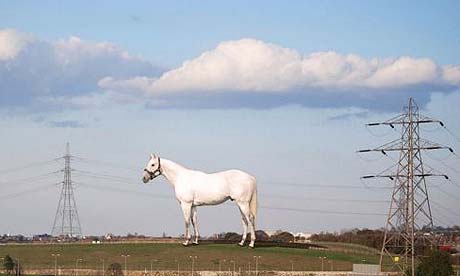
Mark Wallinger
In William Burroughs The Wild Boys, there are attempts made to destroy one’s past by rewriting one’s past.
“The mass media of newspapers, radio, television, magazines form a ceremonial calendar to which all citizens are subjected” Burroughs and Odier
The narrative voice, if that’s what it is, in Wild Boys, is Audrey, described (by himself) as a walking corpse. And the entire book rolls out as a film strip, or a series of film strips. The camera is “the eye of a cruising vulture…”. I was thinking of Burroughs a lot this week (and reading Tim Murphy’s very good study of Burroughs), and of his vision in Wild Boys, and in subsequent books, and that his understanding of the ceremonial calendar, the ideological media apparatus, had begun to carve out the gated communities of privilege, from the outside, of which is found a global anarchy of the poor, the colonial subjects, the wild boys. Burroughs not surprisingly drew on Mayan and Egyptian texts, and introduced El Mono, a spiritual double of the dead soul, and a mimic. I will write more on this in a later post, but it raises a topic that I touched on last post, and will again below, about the decay of mimesis under the rapidly growing states of control that are forming globally. The white patriarchal capitalist class is trying, with ever more desperate rapidity, to recreate the formations of colonialism. This is reflected in cultural terms by re-staging the “first contact” scenario over and over and over. The so called Clash of Civilizations is nothing if not exactly this. Hollywood film and TV reframe this scenario in almost countless narratives, from Orange is the New Black to HBO summer drek like Strike Back. The latter could almost serve as the quintessential colonial war narrative, coupled to the sexualization of violence as a secondary theme.
“America is descending into madness. The stories it now tells are filled with cruelty, deceit, lies, and legitimate all manner of corruption and mayhem. The mainstream media spins stories that are largely racist, violent, and irresponsible —stories that celebrate power and demonize victims, all the while camouflaging its pedagogical influence under the cheap veneer of entertainment. Unethical grammars of violence now offer the only currency with any enduring value for mediating relationships, addressing problems, and offering instant pleasure. A predatory culture celebrates a narcissistic hyper-individualism that radiates a near sociopathic lack of interest in or compassion and responsibility for others. Anti-public intellectuals dominate the screen and aural cultures urging us to shop more, indulge more, and make a virtue out of the pursuit of personal gain, all the while promoting a depoliticizing culture of consumerism.”
Henry Giroux
In 2007, the US defense budget was 439 billion dollars. If you add war costs it jumps to around 600 billion, and if you add domestic security costs, its well over a trillion dollars.
What is most germane in the above quote from Giroux, is the mediating of all relationships with an ideological blanket militarism. It is not just the obvious “entertainment” industry that sets this backdrop of valorizing violence, it also the more subtle and insidious brokers of elite culture.
Walter Benjamin wrote in his essay on mimesis:
“Rather we must suppose that the gift for producing similarities (for example in dances, whose oldest function this is) and therefore also the gift of recognizing them, have changed in the course of history. The direction of this change seems determined by the increasing fragility of the mimetic faculty. For clearly the perceptual world of modern man contains only minimal residues of the magical correspondences and analogies that were familiar to ancient peoples. The question is whether we are concerned with the decay of this faculty or with its transformation.”
Michael Taussig writes:
“So, what’s it like to live in the world we have lost, a mimetic world when things had spirit copies, and nature could thus look back and speak to one through dreams and omens, nature not being something to be dominated but something yielded to or magically out performed, and people, like Darwin’s Fuegians were born mimics?”
The loss of originary mimetic relationships has led to the cultural paralysis one sees today. In Burroughs’ work, the subject position is mimetic, and is anti-capitalist.
“Quien es?”
Last words of Billy the Kid.
The mimetic question.
Taussig again:
“Sustaining the real politik of these situations is a powerful modern mythology of good savage/bad savage by which the whites of Europe and North American purify themselves through using the good savage to purge the bad one, whether communists in Vietnam, Sandanistas in Nicaragua, supposedly corrupt and ecologically insensitive Third World governments in Brazail and Panama, or most especially the bad savage within the constitution of First World whiteness itself.”

Dino Vallis
The colonial imagination colors everything in today’s cultural product. This is becoming increasingly clear with the resurgent racism one sees in new film and TV. For it is not just the validation granted police practices, the technologies of control (about which one can learn the latest techniques at any of a dozen seminars at the London Arms fair or other defense industry gatherings) that suggest total domination is actually what is asked for, is the desire of the fearful populace, but it is also the disunity of the mimetic in modern culture. In shows like Orange is the New Black, the bad savage is clearly demarcated from the good savage. They trade off this roles, however, because in the end, they have only utilitarian purpose. This theme of whiteness taking a trip into the savage territories, only partly civilized, seems to be a theme that is surfacing everywhere. I have heard, for example, countless remarks about Act of Killing, that try to explain the film’s importance by suggesting it is about how the viewer sees him of herself. Mimesis. How do we see ourselves? We can learn this by how the savage sees us. Taussig writes a good deal about the phenomenon of “first contact”. This theme is being replayed adinfitium in today’s cultural marketplace. The colonial template is the one constant. And white liberal guilt is assauged by these rites of white passage into the heart of darkness. The problem is, for the mimetic machinery of the White dominant class, the so called Third World has now adjusted its presentation to reflect back a kitsch version of itself, an image constructed by the white invader hundreds of years ago, and the confrontation for the west is in a sense a confronation with a dupe of itself. The desire for *authenticity* is itself commodified. There are a number of secondary themes in all this. The “authenticity” of the savage, which is admired even as it must be destroyed in the name of progress. Except you cannot kill something that has already been killed. The social construction, the white narrative conceit that included Imperialist conquest, is micro managed now. To watch shows such as “Copper”, set in late 19th century New York is to see a fantasy of black history. The liberal desire to show black characters as accomplished and *good* is only another way to hide the actual violence perpetrated by whites on the former slave population. There are multiple strategies of appropriation. Whiteness is the starting place, though, and all other narrative tropes flow from that origin. If one reads the insane amount of coverage given to Mily Cyrus and her twerk performance, one sees two children of wealthy entertainment industry insiders acting out a cartoon version of an earlier cartoon version of white people performing a parody, almost, of black performance. The criticism I’ve read, however, all exists within a frame of a white based Capitalism, of the music industry and the commodifying of performers. And of private property, and an entire system of cutural ownership. Is Miley using other black dancers to update her image as more “authentic”, she is doing what about a thousand other white singers have done. In a sense, it is today less *authenticity* than it is a signifier for having reached adulthood (and the discomfort remains of her pollution by blackness). Children cant be trusted to hang out with black people, so if you can do a song with black dancers and back up singers, it’s a sure sign your parents let you use their car on friday nights. This is the appropriation of this idea of authenticity, but an authenticity constructed via this second wave of colonial narrative. Black performers paid to entertain and validate white folks.
http://hiphopandpolitics.com/2013/08/30/from-miley-to-macklemore-the-privilege-spectrum/?fb_source=pubv1
The white identity is more unstable today, however, and that probably accounts for this need to constantly re-narrate these colonial voyages — metaphorically in most cases, though also close to literal at times. A constrained and instrumentalized mimetic process yeilds highly unsatifactory results. These results just trigger deeper reactions of white essentialism. Race is both being de-mythologized and re-mythologized. As long as the white intruder is kind to the natives, the white audience for these narratives feel somehow the purifying and expunging of guilt can take place with some traction. If we make the doctor a black man, we can erase the history of violence to blacks. Such paternal condescension goes hand in hand with all western slave narratives.

However, cutting across this all is the state’s militarism. The global police state, clearly growing exponentially, has created the need for another narrative. And this narrative of “security from the savages” works to destroy any mimesis, and re-organizes mimesis along carefully controlled lines. The released Manning video has caused problems in this new narrative. It is the perfect mini-movie of colonial retrenchment.
There is a shift in perception, I suspect, in the West. People look at the world on the screens of cell phones or their ultrabook, and the world looks at them on screens in security offices or air conditioned control centers. The hegemonic telecom reality of Google and Microsoft and Sony and Apple have digitalized the image of everything, google has mapped everything, photographed it, and yet in each action of digital image documenting, as much gets erased as gets produced. The world doesn’t shrink because of google map, ANOTHER world shrinks, and is mapped. It is not a world with humans. However, it is a world that suffocates its viewers with fear and suspicion.
Pinter was able to create an acute menace just off stage, as an expression of personal terrors and repression set against bourgeois society, and Kafka drew a landscape of dream sickness, of our phylogenetic forgotten encounters, and Sironi could realize the brutal terrors of the seemingly ordinary, of street corners and alleys and the blank flat light of an eternal early afternoon in what feels like a prophecy of a studio film set. Digital psychic tourism allows no mimetic process for nothing happens here, for its not space, its an idea about space realized in digitial form. Adorno said artworks were only the placeholders for that no longer disfigured by barter or injured by the profit motive. Today, there is ONLY that which is disfigured by profit, even if the disfigurement has a shiny clean CGI surface. Adorno finished that paragraph by saying that embedded within artworks was the potential for explosive social potenital. His belief that art pointed to the *other* in some fashion, that the constant unrelenting battary of wage slavery and the controls of a militarist fascist state tend to wear people down until all capacity for dreams is gone. The raw exposed nerves of absolute human negation is just about reached in the United States of the 21st century.
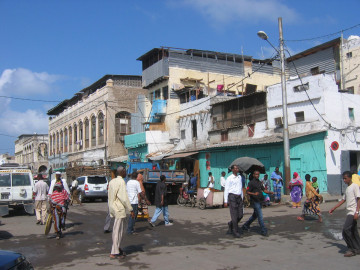
Djibouti City, 2012
Stories of SWAT teams coming to execute a baby deer at the animal shelter seem almost bad fairy tales, an updated Grims written by prisoners in the wing for the criminally insane. Kicking in the doors of the elderly searching for contraband, only to find its the wrong address, or the shooting of pet dogs, the confiscation of bees, or raw milk, and the destruction of vegetable gardens is the stuff of B-Movie fascists. But it is the wildly erratic violence of a society that has reached some absolute floor for robotic relfexive cruelty. But such behavior it is a daily occurance now for the domestic police.
The images do not exist or articulate a *space*. They exist in a realm without space. Space has been replaced with the blue print for space. It is a set of visual indicators imbued with, usually, a threat attached. I read recently where the United States warned travellers about coming to Norway. The reason had something to do with loose borders, but whatever it was, it was clearly counter intuitive and absurd. But it was accompanied by a couple photos of Norwegian forests and fjords. The flat generic looking forest takes on the character of fear and menace. It is non specific, however. It is de-linked from any individual experience for nobody has ever been in such a generic forest. These thumbnails of ‘reality’ accumulate. Soon, the discourse of the average American has been depleted of real mimetic material with which to engage. What happens when a society cannot tell themselves stories?
As William Robinson noted in the quote at the top of this posting, there is a transition happening on a global scale to control states, or rather, states of control. It is crucially important to remember that the West likes to discuss global politics from the p.o.v. of white Euro/North American perspectives. Mostly from the perspective of an Imperialist United States. The US ‘state* is a white state. It enforces the property rights and wealth of a 1% white population. The discussion of 9/11 for example is always, it seems to me, slanted toward the importance it had for *the west*. Everyone from Badiou to Habermas to countless other white thinkers, testify to the events of that day as constituting a paradigm shift. In truth, there has been scant change in the western sensibility, in terms of privilege and rights, since 1700. Colonialism has never gone away.
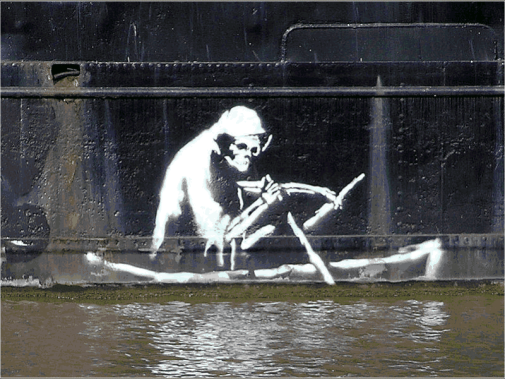
From National Security Magazine:
“In 2012, Africa Command planned 14 major exercises with African militaries, according to the command’s website. Meanwhile, the Foreign Military Financing program gave African militaries $45 million to buy American-made weapons in 2011. Tunisia received the most cash ($17 million), followed by Morocco ($9 million) and Liberia ($7 million).”
Remember that wars in the Congo, and neighboring countries have accounted for something like 6 million deaths over a decade. And to remember that there are countless lesser conflicts on that continent as I write. All of them are using weapons on sale from the London Arms Fair. The US is now in the process of building almost counltess additional drone bases and eighteen large military bases, some with several thousands of full time personel. The US has bases in 12 countries in Africa. This count will certainly rise. So, the view from the back alleys of towns in Niger or Sierra Leone, or Burkina Faso, might not see 9/11 in quite the same way. Or if one is in the population centers of Asia, from Manilla to Jakarta, the world view is rather different. Or the streets of Sao Paulo, or Mexico City. The defense industry, and global security business, is part of, and productive of, a grand bit of national theatre in the West. Behind the curtain, the same corporations (many listed above) are stage managing the drama. What level of reality does one ascribe to this spectacle? One thing is clear, the liberal western audience is happy to suspend disbelief.

The shrinking and decaying mimetic process in the advanced west requires some scrutiny, for if Adorno is right, as he puts it in Minima Moralia:
“De gustibus est disputandum”…(it is essential to argue about taste).
And it is essential he adds, for aesthetics is involved in the truth. For if the bourgoise white and educated liberal class withdraw the discussion to things nonbinding, to a refusing of material arguments, to fan attachments as a replacement for judgements of quality and taste, then we can keep…
“…the reflection on truth and the claim to it at a distance from the works of art.”
As Gerhard Schweppenhauser put it: “Arts truth claim is the mortal enemy of indifferent aesthetic relativism, itself structured by commodified consciousness.”
The aesthetic governance of the new fascist state is grinding down, before all else of a psychological nature, the magical legacies of mimetic engagement. That is the bourgeois violence of US commodified culture today.
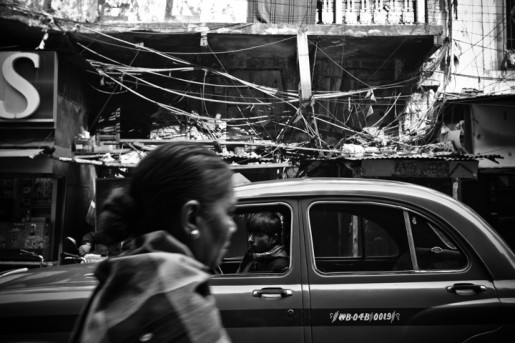
Reshad Kamal, photography
I wanted as a foot note to mention a number of photos I came across of old monumental sculpture from the former Yugoslavia. Such work is often ridiculed now, and seen as synonymous with the bad communist spectacles (mostly reproduced by the west’s culture industry).
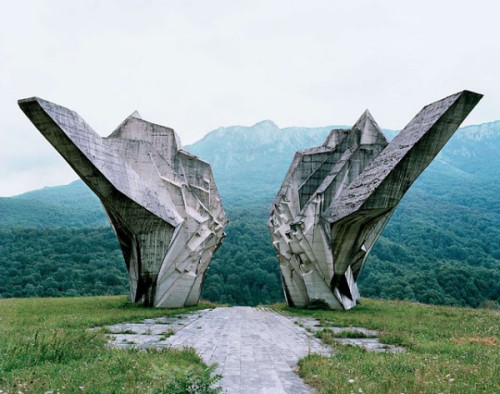
Monument, former Yugoslavia, photography Jan Kempenaers
Belgian photographer Jan Kempenaers traveled around what is now Serbia, Croatia, and Bosnia, documenting the now crumbling monuments to the former socialist Republic. Most were built in the sixties, commissioned by Tito, and a number commemorate anti fascist conflicts. What struck me, of course, was the narrative that seems unavoidably attached to such work, the melancholy end to the former FRY, to the travesty of the US led NATO bombing of Belgrade and the Milosevic show trial at The Hague. There is, in this work, an almost anti suburban distancing, the scale and the materials…mostly concrete and steel, and the endurance of such monuments left to fend for themselves. It is the same sense of something indefatiable that you see in all ruins, the allegorical resonance of that which survives. The monument in the photo above is at Tjentište.

The abandoned Yugoslavia monuments are strangely powerful and evocative. From time to time you see links posted on the web, such as: http://www.cracktwo.com/2011/04/25-abandoned-soviet-monuments-that-look.html
I’m really enjoying the design and layout of
your website. It’s a very easy on the eyes which makes it much more
pleasant for me to come here and visit more often. Did you hire out a
designer to create your theme? Excellent work!